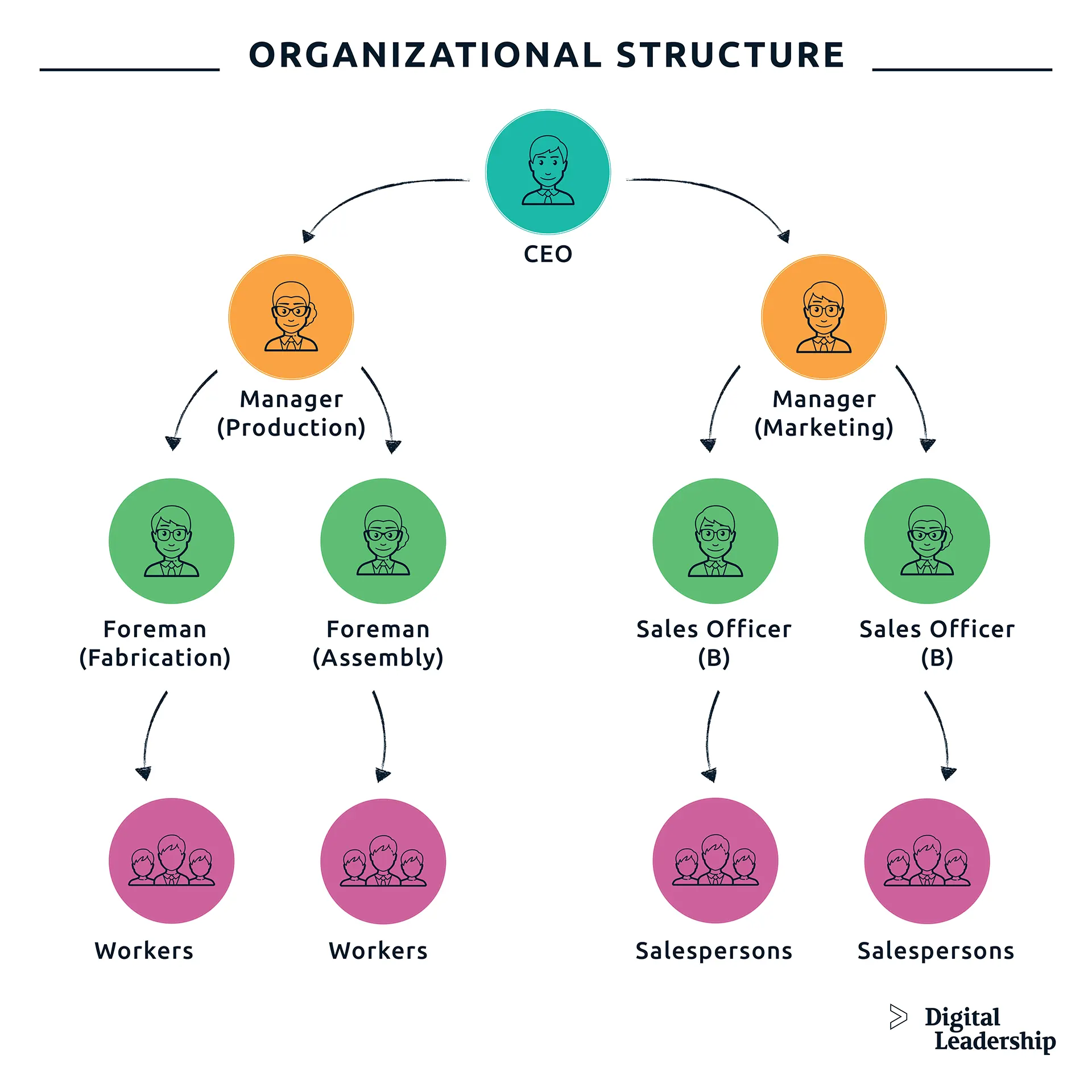Lot for Functional Proficiency in the Assembling Area

The assembling area prospers when it continually looks for ways of streamlining execution, and it’s never been more straightforward thanks to IoT for functional proficiency. As a matter of fact, the Web of Things (IoT) has opened up another universe of conceivable outcomes. IoT can possibly alter producing activities by associating different gadgets and machines to the Web, empowering ongoing information observing and examination.
This blog will cover:
Four IoT parts in assembling
Four instances of IoT gadgets in assembling
Five critical advantages of IoT on functional productivity
Four IoT Parts in Assembling
The execution of IoT in the assembling area depends on a few key parts that work couple to make an interconnected and effective biological system.
Sensors
These gadgets are implanted in hardware and creation lines to gather constant information on:
Gear execution information
Temperature
Pressure
Moistness
Sensors go about as the IoT framework’s eyes and ears, giving the important information to examination and independent direction.
Availability
Associated gadgets like cell switches and installed remote modules give the conventions and availability across gadget organizations, and work with correspondence between sensors, gadgets, and frameworks. Availability can be accomplished through different means, for example,
Particular modern correspondence norms like cell correspondence, Zigbee and LoRaWAN
Cell organizations
Bluetooth
Wi-Fi
Dependable and secure availability guarantees information streams consistently from sensors to the focal handling units.
Information Handling
Information is handled to separate significant experiences. Information investigation can happen by the same token.
In the cloud, where many terabytes of information (and that’s only the tip of the iceberg) can be put away and examined
At the edge, nearer to the wellspring of information assortment, to empower speedier reaction times and decreased dormancy.
High level calculations, computerized reasoning (man-made intelligence), and AI (ML) procedures are frequently utilized to process and dissect the information, distinguishing designs and foreseeing expected issues before they emerge.
The UI (UI)
The UI associates human administrators with the IoT framework. A very much planned UI presents the handled information in an unmistakable and significant configuration, frequently through dashboards or portable applications.
Like that, administrators can screen the situation with the assembling processes, get cautions, and pursue informed choices in light of continuous data. A natural UI is fundamental for compelling human-machine connection, guaranteeing clients can without much of a stretch decipher information and answer instantly to peculiarities.
Together, these four parts structure the foundation of IoT in assembling, empowering a shrewd, responsive, and proficient creation climate.
4 Instances of IoT Gadgets in Assembling
In assembling, a few IoT gadgets assume significant parts in helping functional effectiveness and efficiency.
Shrewd Sensors
Shrewd sensors screen a few boundaries, including temperature, pressure, stickiness, vibration, and movement. For example, temperature sensors can guarantee that assembling processes that require exact warm circumstances stay inside determined ranges.
Conversely, vibration sensors can recognize irregularities in hardware activity, flagging potential support needs before a breakdown happens.
Associated Machines
These machines have implanted sensors and correspondence abilities, permitting them to send execution information and get guidelines progressively.
Models incorporate CNC (PC Mathematical Control) machines and 3D printers that can be remotely observed and controlled, advancing creation timetables and decreasing margin time through prescient upkeep.
Computerized Directed Vehicles (AGV) and Robots
AGVs are utilized for material dealing with, exploring processing plant floors independently to ship merchandise between various phases of creation. They depend on IoT innovation to follow ideal ways, keep away from impediments, and speak with different gadgets to guarantee effective work process.
Additionally, modern robots outfitted with IoT abilities can perform dreary errands with high accuracy. You can likewise reconstruct on the fly to adjust to changing creation prerequisites.
Wearable Gadgets
Wearable gadgets for assembly line laborers are turning out to be progressively famous too when you put resources into IoT for functional productivity. These can incorporate shrewd glasses or wristbands that give ongoing information and alarms straightforwardly to laborers, further developing wellbeing and efficiency.
Envision assembly line laborers wearing smartwatches or identifications that track their movement levels, area, and even exhaustion. This information can be taken care of into the worker planning application.
Furthermore, brilliant glasses can show get together guidelines, lessening blunders and accelerating the expectation to learn and adapt for new workers.
Another model is natural observing gadgets, which track conditions inside the assembling office to guarantee a protected and consistent work space. These gadgets can screen air quality, commotion levels, and other natural factors and send cautions in the event that conditions surpass safe edges.
Ultimately, savvy energy meters screen and oversee energy utilization continuously. These gadgets assist makers with streamlining their energy use, diminish costs, and limit ecological effect by giving point by point experiences into energy designs and distinguishing open doors for investment funds.
5 Vital Advantages of IoT for Functional Effectiveness
Presently, we should jump into the vital advantages of putting resources into IoT for functional productivity.
1. Continuous Checking and Control
Continuous checking is a key piece of IoT.
By implanting sensors and availability arrangements in apparatus and creation lines, makers can ceaselessly follow the exhibition and state of their gear.
In the wellbeing business, clinical messenger administrations would significantly profit from IoT.
The clinical assembling area needs to convey clinical hardware and supplies on time and inside financial plan to medical services offices, so IoT sensors can assist with following shipments and traffic conditions progressively to enhance courses and guarantee convenient conveyance.
These sensors assemble information on different boundaries and are communicated to a focal framework for investigation. Consequently, individuals dealing with the frameworks can promptly distinguish and address inconsistencies and deviations.
Consistent observing guarantees that the assembling processes run as expected, limiting personal time and helping efficiency. Furthermore, at times, human intercession isn’t required.
For instance, in the event that a sensor identifies a machine working at a poor temperature, the framework can naturally change the cooling component to keep up with the ideal temperature. This degree of control lessens the probability of deformities and waste, guaranteeing that items satisfy quality guidelines.
To increment functional proficiency, joining the information from IoT sensors and machines with programming for checking workers is smart.
This gives experiences into how representatives work and use the machines, hence permitting them to streamline work processes, recognize bottlenecks, and dispense assets all the more effectively. In addition, this kind of programming can likewise assist in quality confirmation, assisting with ensuring workers are sticking to somewhere safe conventions and possibly decreasing mishaps.
2. Prescient Support
Generally, support is performed on a decent timetable or after a disappointment, which can be wasteful and expensive. Spontaneous margin time can monetarily hurt producers as much as $260,000 each hour, costing the business $50bn yearly.
IoT-empowered prescient support utilizes sensor information to gauge hardware disappointments before they occur. By dissecting patterns and examples in the information, for example, expanding vibration levels or sporadic temperature vacillations, the framework can foresee when a machine is probably going to fall flat and ready support faculty.
A proactive methodology permits support to be planned at the most helpful times, diminishing spontaneous personal time and broadening the life expectancy of hardware. Prescient support further brings down fix costs and limits the effect on creation plans.
3. Stock Administration
Savvy sensors and RFID (Radio-Recurrence Distinguishing proof) labels can be appended to unrefined components, work-in-progress things, and completed merchandise, following their area and status all through the assembling system. The outcome? Better inventory network the executives.
This degree of detail permits makers to keep up with ideal stock levels. Like that, you generally have materials accessible when required without overloading.
Computerized stock following takes out manual stock counts and limits human mistake, prompting more exact stock records. IoT frameworks can likewise coordinate with big business asset arranging (ERP) frameworks, giving continuous information that aides in better determining and arranging.
For instance, in the event that the framework recognizes that a specific part is running short, it can naturally set off a reorder, forestalling stockouts and creation delays. This degree of computerization smoothes out production network activities and further develops request satisfaction rates.
4. Energy The board
Fabricating offices consume huge energy, and wasteful utilization prompts high functional expenses and an adverse consequence on the climate.
IoT-empowered energy the board frameworks utilize brilliant meters and sensors to follow energy utilization progressively across various machines and cycles. This information permits producers to distinguish energy-concentrated activities and failures.




